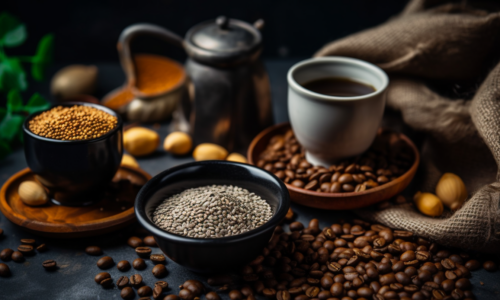Aromatic flavors in coffee contribute to the overall sensory experience of coffee drinking. These flavors are a result of various factors, such as the origin of the coffee bean, the roasting process, and brewing techniques. Understanding and identifying aromatic flavors in coffee can help one appreciate and enjoy the coffee more fully.
Aromatic Flavors in Coffee
- Fruity: Described as notes of berries, citrus, or tropical fruit. Characteristics include brightness, acidity, and sweetness.
- Floral: Described as notes of jasmine, lavender, or rose. Characteristics include delicate sweetness and a subtle finish.
- Nutty: Described as notes of almond, hazelnut, or walnut. Characteristics include a smooth texture and a mild sweetness.
- Chocolaty: Described as notes of dark chocolate, cocoa, or mocha. Characteristics include a rich, full-bodied texture and bitterness.
- Spicy: Described as notes of cinnamon, clove, or nutmeg. Characteristics include a warm and intense aroma.
How to Identify Aromatic Flavors in Coffee
- Pay attention to the scent of the coffee before drinking.
- Take small sips of the coffee and let it linger in your mouth.
- Try to identify the different flavors present in the coffee.
- Compare and contrast the flavors with those in other types of coffee.
Brewing Techniques to Enhance Aromatic Flavors in Coffee
- Use fresh, high-quality coffee beans.
- Choose a brewing method that complements the desired flavor profile.
- Experiment with different brewing ratios to achieve the desired strength and taste.
- Control the water temperature and brewing time to achieve optimal extraction.
Conclusion: Enjoying Aromatic Flavors in Coffee
Aromatic flavors in coffee contribute to the overall sensory experience of coffee drinking.
Understanding and identifying the different flavors can help one appreciate and enjoy coffee more fully.
Experimenting with different brewing techniques can enhance the aromatic flavors in coffee and lead to a richer sensory experience.
When we think about coffee, we often focus on the caffeine content, strength, or origin of the beans. However, another essential aspect of coffee is the aroma and taste. Aromatic flavors in coffee contribute to the overall sensory experience of coffee drinking. In this blog post, we will explore the various aromatic flavors in coffee, how to identify them, and how to enhance them through brewing techniques.
There are several aromatic flavors in coffee, each with its own unique characteristics. Fruity notes are described as having hints of berries, citrus, or tropical fruit. These flavors are often bright, acidic, and sweet. Floral notes, on the other hand, have a delicate sweetness and subtle finish, with hints of jasmine, lavender, or rose. Nutty notes, like almond, hazelnut, or walnut, have a smooth texture and mild sweetness. Chocolaty notes, like dark chocolate, cocoa, or mocha, are rich, full-bodied, and bitter. Finally, spicy notes, like cinnamon, clove, or nutmeg, have a warm and intense aroma.
How to Identify Aromatic Flavors in Coffee
To identify aromatic flavors in coffee, pay attention to the scent of the coffee before drinking it. Take small sips of the coffee and let it linger in your mouth, trying to identify the different flavors present in the coffee. Compare and contrast the flavors with those in other types of coffee.
Brewing Techniques to Enhance Aromatic Flavors in Coffee
To enhance aromatic flavors in coffee, start by using fresh, high-quality coffee beans. Choose a brewing method that complements the desired flavor profile. Experiment with different brewing ratios to achieve the desired strength and taste. Control the water temperature and brewing time to achieve optimal extraction.



